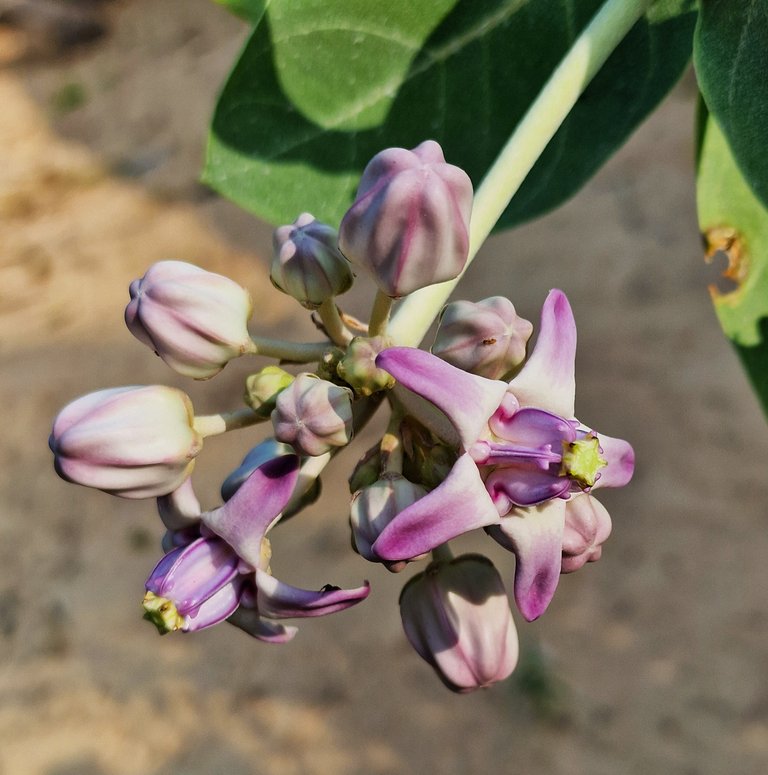 What's not to like about Calotropis gigantea giant milkweed. as the name suggests it grows as a weed so it needs no care and is hard to get rid of- but this is one to keep in the garden. it attracts birds, in particular a variety of species of sunbirds which are always a joy to observe tiny, shiny and very colorful. in addition the milkweed is an ayurvedic medicinal plant with a number of medicinal properties including anti-cancer. regular application of a drop of the milk on skin cancer works wonders. these plants have been in the garden for much longer than we have.
What's not to like about Calotropis gigantea giant milkweed. as the name suggests it grows as a weed so it needs no care and is hard to get rid of- but this is one to keep in the garden. it attracts birds, in particular a variety of species of sunbirds which are always a joy to observe tiny, shiny and very colorful. in addition the milkweed is an ayurvedic medicinal plant with a number of medicinal properties including anti-cancer. regular application of a drop of the milk on skin cancer works wonders. these plants have been in the garden for much longer than we have.
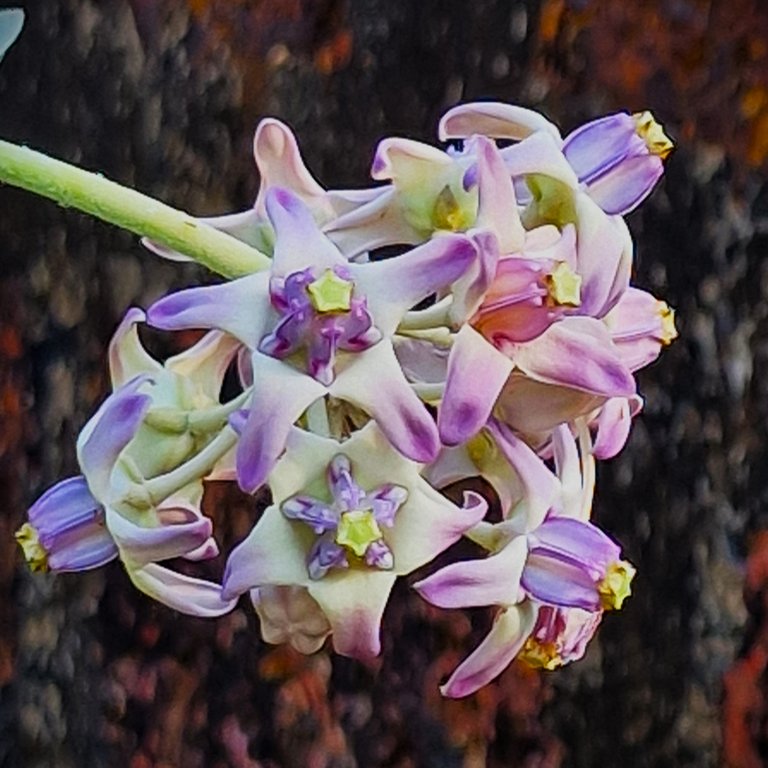 these are purple ones that grow naturally here but last year we planted a white seedling, known locally as Hanuman flowers because they are often offered to Hanuman. the seedling has survived in the sand and doing ok but has yet to flower. last year we visited Gokarna where there were many white milkweed growing both in gardens and wild. the growing conditions there are very similar to here so i suspect it will do fine. if it does we will be offering the first flower to Hanuman.
these are purple ones that grow naturally here but last year we planted a white seedling, known locally as Hanuman flowers because they are often offered to Hanuman. the seedling has survived in the sand and doing ok but has yet to flower. last year we visited Gokarna where there were many white milkweed growing both in gardens and wild. the growing conditions there are very similar to here so i suspect it will do fine. if it does we will be offering the first flower to Hanuman.
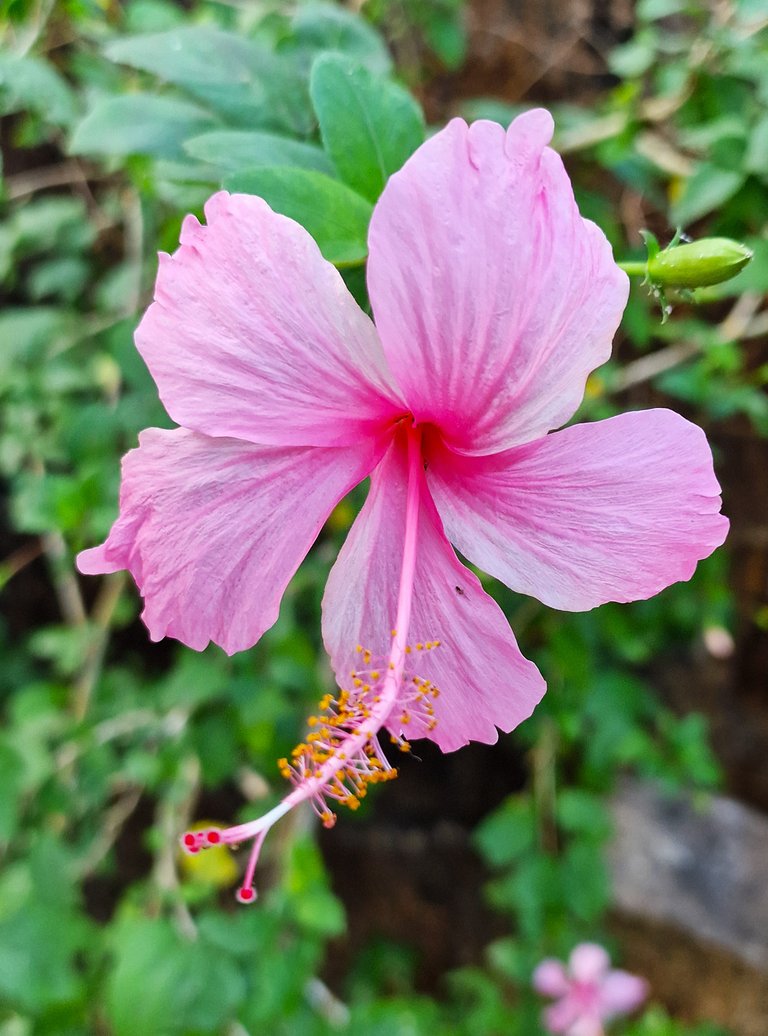 of the different colored hibiscus, pink, red, orange, white, the pink and orange are in the best shape. this year the monsoon dragged on a couple of extra months and they have benefited from that. since the soil is basically beach sand they require regular watering. we are not here all year and though there is a man who is paid to water the plants and look after things, he is very busy and the hot months of May and October are hard on these wonderful flowering plants. they are also valuable natural medicines.
of the different colored hibiscus, pink, red, orange, white, the pink and orange are in the best shape. this year the monsoon dragged on a couple of extra months and they have benefited from that. since the soil is basically beach sand they require regular watering. we are not here all year and though there is a man who is paid to water the plants and look after things, he is very busy and the hot months of May and October are hard on these wonderful flowering plants. they are also valuable natural medicines.
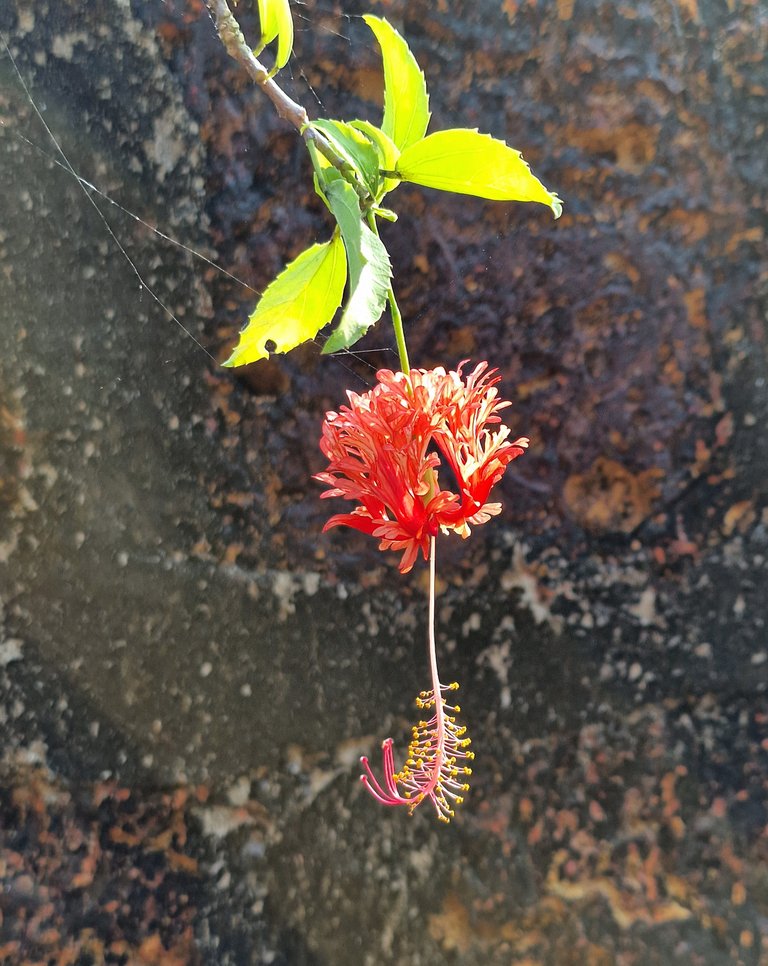 the pink and white hibiscus are simple ones but the orange ones and some of the red ones are more hybridized versions. we use the simple ones for medicine and teas but all of them attract nectar-drinking birds and insects and every kind is picked for ritual purposes
the pink and white hibiscus are simple ones but the orange ones and some of the red ones are more hybridized versions. we use the simple ones for medicine and teas but all of them attract nectar-drinking birds and insects and every kind is picked for ritual purposes
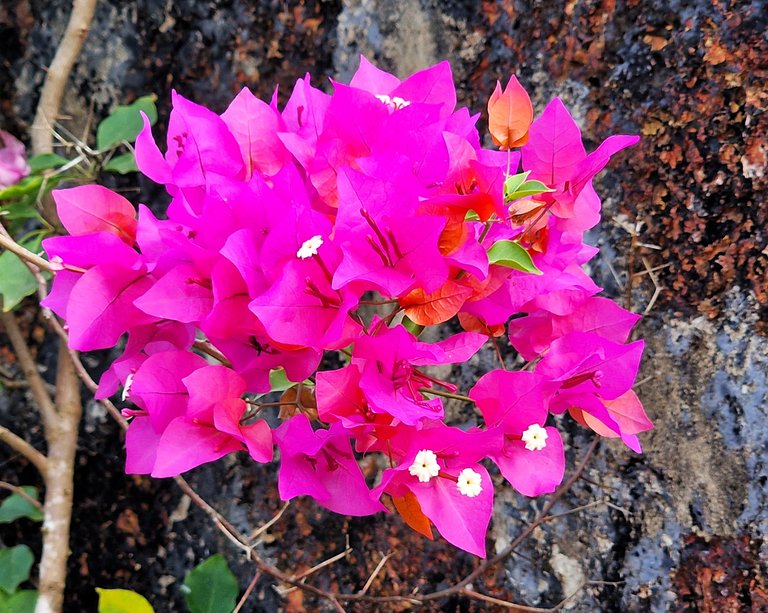 these bougainvillea are among the first plants we added to the garden when we first came. once they have established themselves they require little care, if anything they need pruning.
these bougainvillea are among the first plants we added to the garden when we first came. once they have established themselves they require little care, if anything they need pruning.
but the ones that get water most often are the ones with the most flowers
 the Averrhoa carambola star fruit or carambola is a more recent addition that is thriving unexpectedly well in the sand. it's not much more than a bush and still it bears a lot of fruit. even though the flowering is not completely finished for the season there are lots of fruit well on the way. by the end of February they should begin to ripen and last through April
the Averrhoa carambola star fruit or carambola is a more recent addition that is thriving unexpectedly well in the sand. it's not much more than a bush and still it bears a lot of fruit. even though the flowering is not completely finished for the season there are lots of fruit well on the way. by the end of February they should begin to ripen and last through April
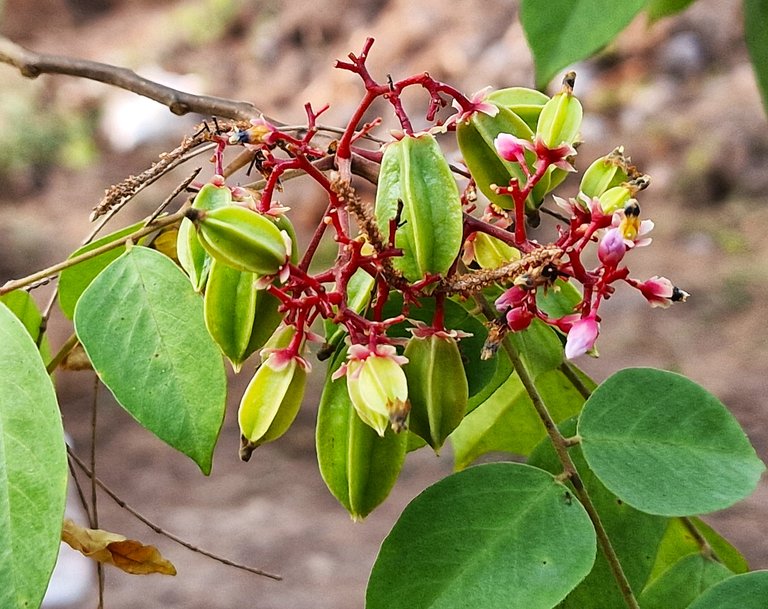 he flowers are rather discreet but that's ok. it's the fruit we are most interested in
he flowers are rather discreet but that's ok. it's the fruit we are most interested in
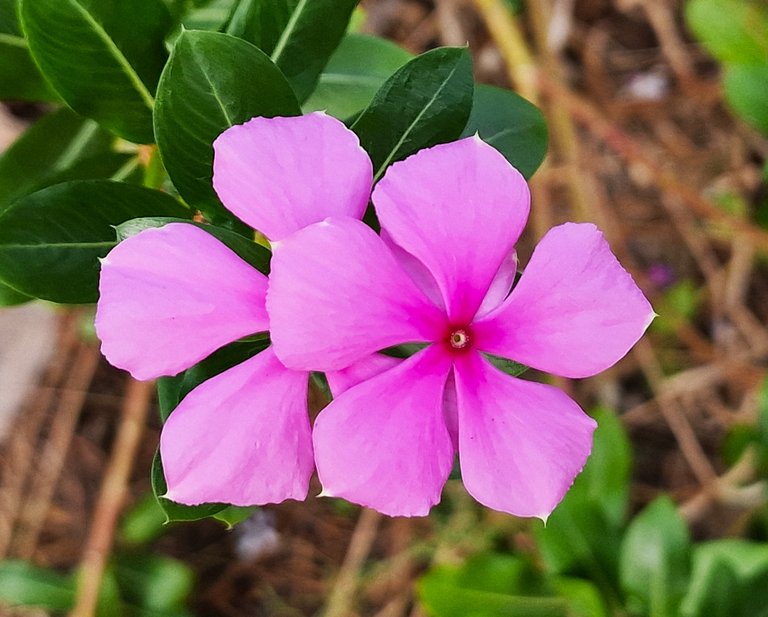 here's another ayurvedic medicinal flower that is very easy to grow. we brought a few plants here from a visit to Dr. Jain's herbals and they thrive here. they spread themselves in the sand and don't require any care though they tend to flower more when given some water occasionally
here's another ayurvedic medicinal flower that is very easy to grow. we brought a few plants here from a visit to Dr. Jain's herbals and they thrive here. they spread themselves in the sand and don't require any care though they tend to flower more when given some water occasionally
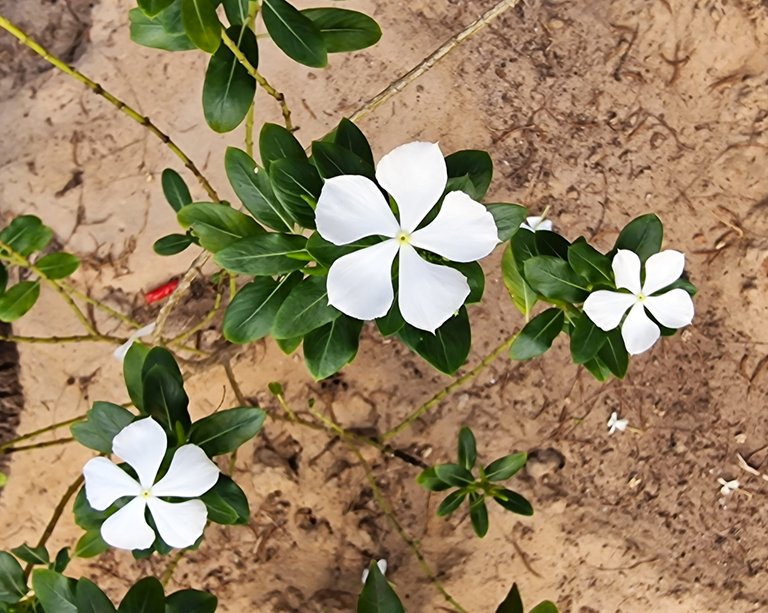 they are a species of Impatiens that are either pink of white. one year our caretaker had pulled all of them up thinking they were weeds but some escaped his hands and within 2 years they had completely regained their numbers. they flower all through the year and it's always a pleasure to see their bright blossoms
they are a species of Impatiens that are either pink of white. one year our caretaker had pulled all of them up thinking they were weeds but some escaped his hands and within 2 years they had completely regained their numbers. they flower all through the year and it's always a pleasure to see their bright blossoms
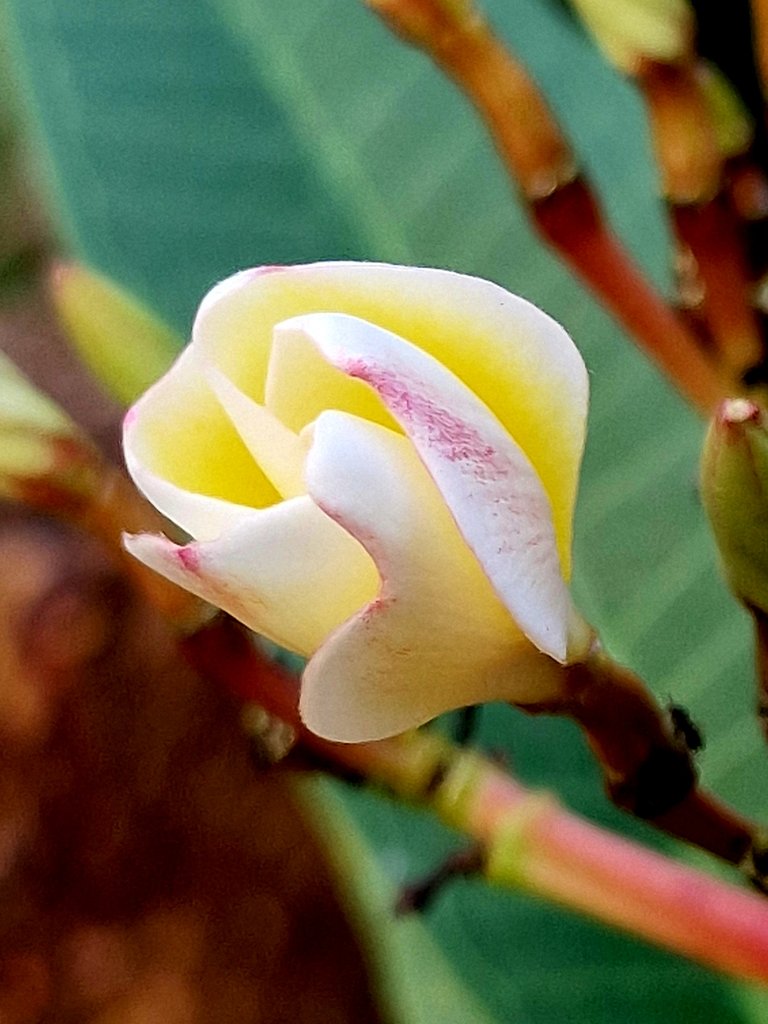 the Plumeria sp. frangipani are another more recent addition. they are struggling to bears leaves but the white blossoms are about to open. they are not expected to do well in pure sand so we gave them some cow dung when we planted them. clearly they would do better with some collecting dung is on the list of duties
the Plumeria sp. frangipani are another more recent addition. they are struggling to bears leaves but the white blossoms are about to open. they are not expected to do well in pure sand so we gave them some cow dung when we planted them. clearly they would do better with some collecting dung is on the list of duties
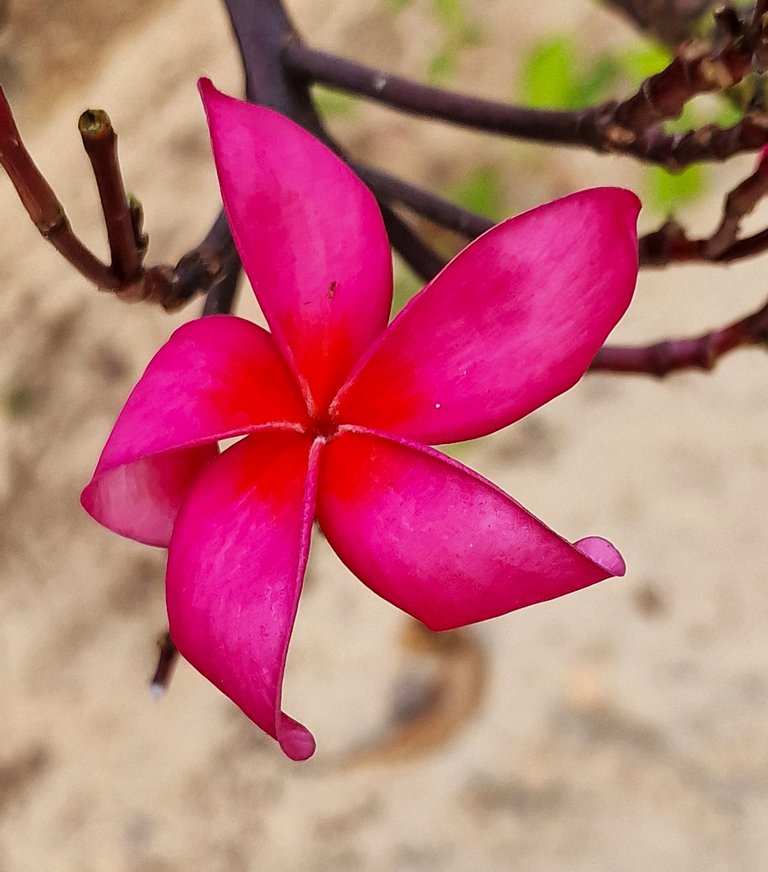 and the red ones are in full bloom and have a few leaves but i hope we can get them looking better soon
and the red ones are in full bloom and have a few leaves but i hope we can get them looking better soon
 most of the coconut trees do fine in the sand as long as they get water during the dry season. the trees farthest back are under water during the monsoon and do not do quite so well. when we are not here nobody harvests the coconuts properly so many fall to the ground and lie there. during the monsoon some of them sprout so each year we get new plants. we have more than we can deal with so we sell the plants for 5 times the price of what we could get for the coconuts that don't sprout.
most of the coconut trees do fine in the sand as long as they get water during the dry season. the trees farthest back are under water during the monsoon and do not do quite so well. when we are not here nobody harvests the coconuts properly so many fall to the ground and lie there. during the monsoon some of them sprout so each year we get new plants. we have more than we can deal with so we sell the plants for 5 times the price of what we could get for the coconuts that don't sprout.
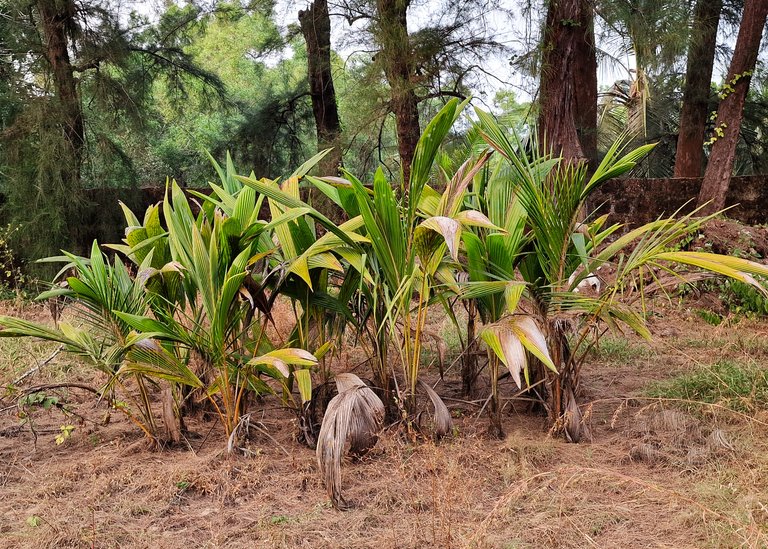 these organic plants are 3 years old and ready for sale. since the soil is sand they develop deep roots but grow slowly. hopefully we can sell them soon
these organic plants are 3 years old and ready for sale. since the soil is sand they develop deep roots but grow slowly. hopefully we can sell them soon
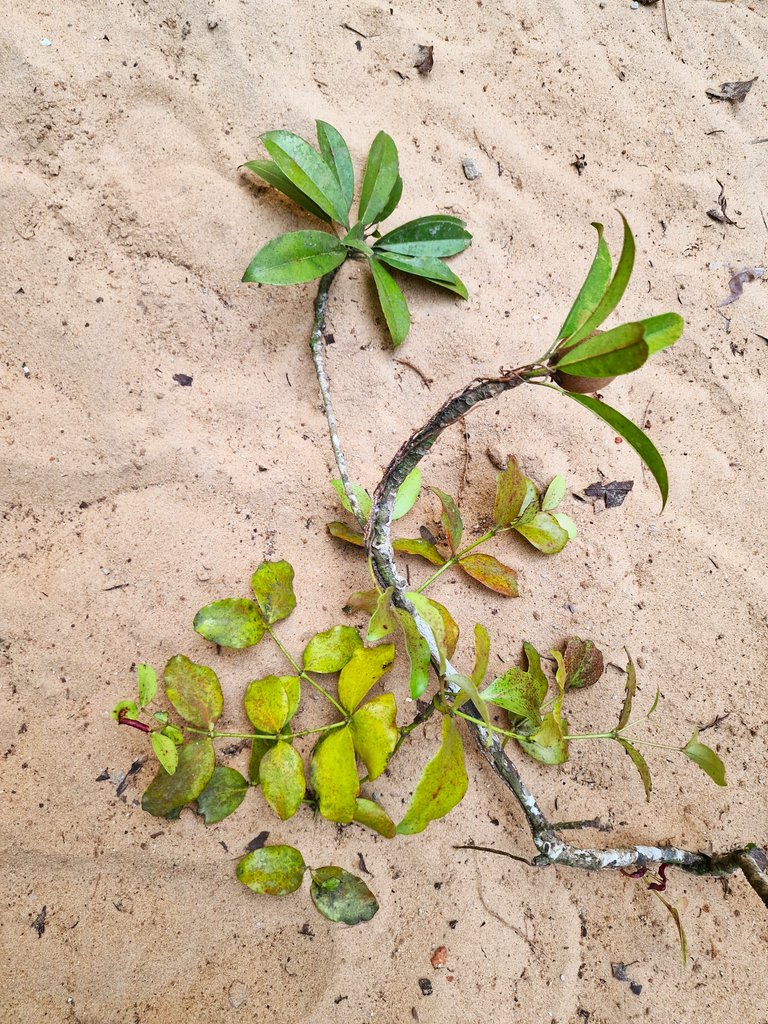 but not all is well in the garden. the forces of nature are powerful here in the tropics. one of the challenges we have is the Dendrophthoe falcata curved mistletoe. this is not the one with the tradition to kiss under during Christmas. it's a parasite that slowly kills our cashew, mango and sapodilla trees. and it's best to cut the branch before it gets a chance to spread and flower. the round light green leaves are the young mistletoe that had started spreading on a sapodilla tree
but not all is well in the garden. the forces of nature are powerful here in the tropics. one of the challenges we have is the Dendrophthoe falcata curved mistletoe. this is not the one with the tradition to kiss under during Christmas. it's a parasite that slowly kills our cashew, mango and sapodilla trees. and it's best to cut the branch before it gets a chance to spread and flower. the round light green leaves are the young mistletoe that had started spreading on a sapodilla tree
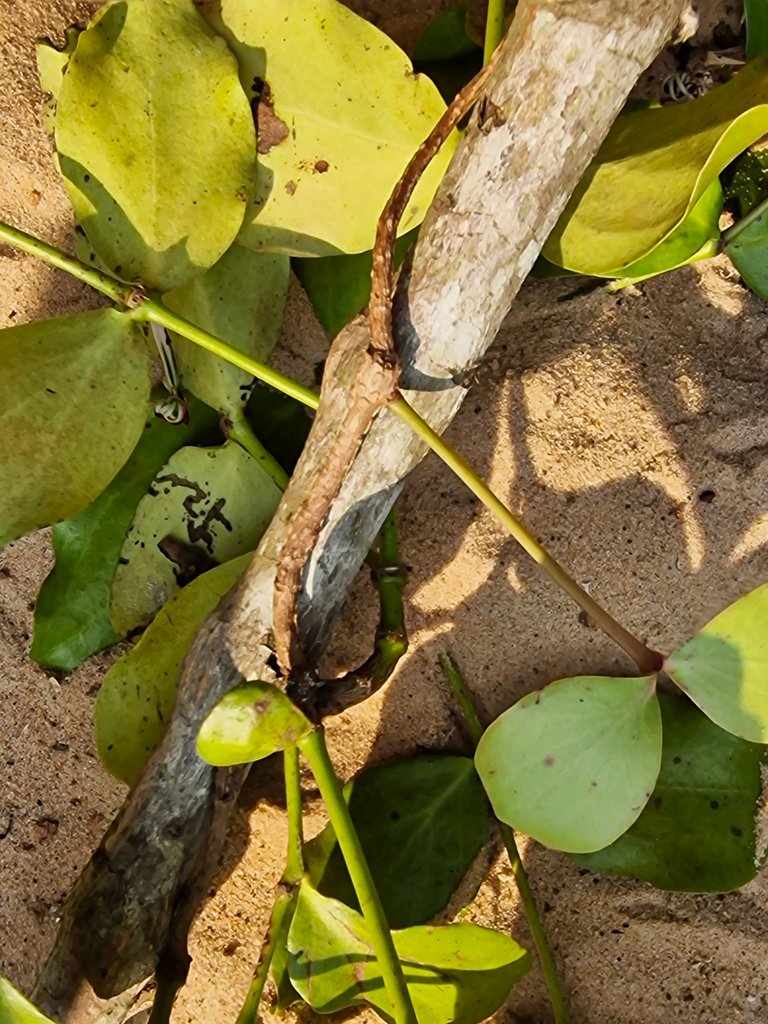 the flowers are like honeysuckle so they attract many insects and birds to more than 400 host species of trees. the same birds spread the parasites when they come to eat the fruits in our trees. we do enjoy the birds coming and don't mind they taking some of the fruit but it would be nice if they didn't thank us so profusely with their gifts of mistletoe. once they establish themselves they dig into the bark and grow along the branch fastening new points where they suck the life out of the host.
the flowers are like honeysuckle so they attract many insects and birds to more than 400 host species of trees. the same birds spread the parasites when they come to eat the fruits in our trees. we do enjoy the birds coming and don't mind they taking some of the fruit but it would be nice if they didn't thank us so profusely with their gifts of mistletoe. once they establish themselves they dig into the bark and grow along the branch fastening new points where they suck the life out of the host.
they do have medicinal value, including anti-cancer properties so i can't only say bad things about it. but if not removed quickly first the branch stops producing fruit, then within just 2-3 years the whole tree stops producing and the parasite covers most of it and the tree dies a slow death
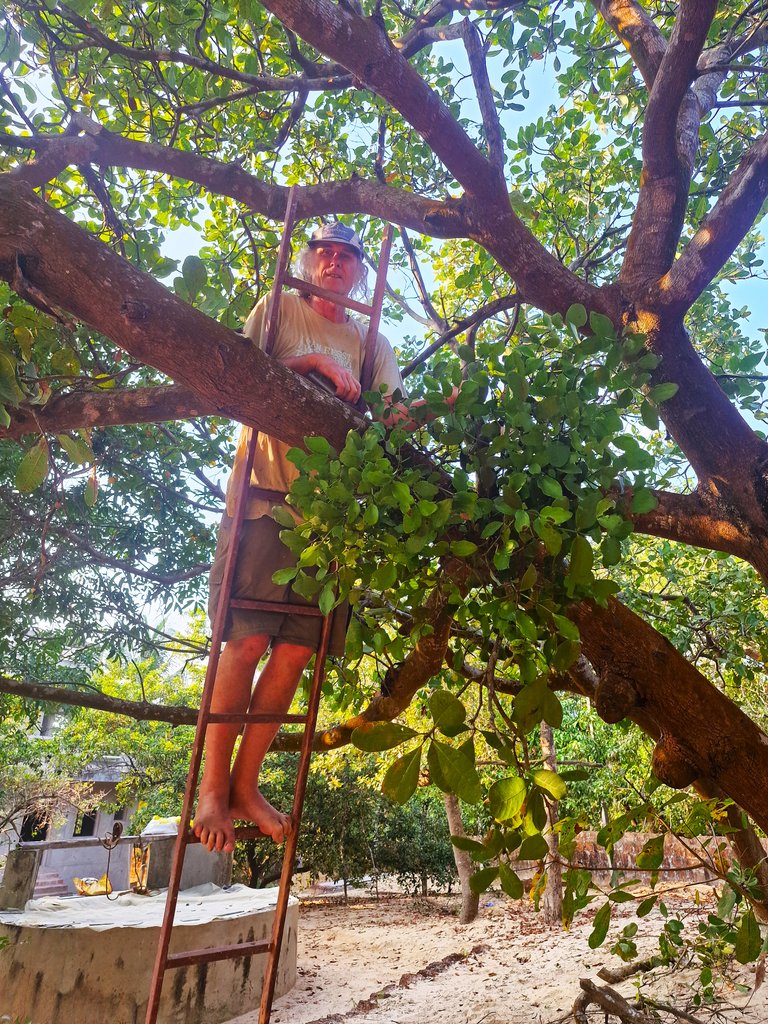 here i am up the ladder removing a medium sized cluster of the dense mistletoe from one of our cashew trees. that's our front well behind me
here i am up the ladder removing a medium sized cluster of the dense mistletoe from one of our cashew trees. that's our front well behind me
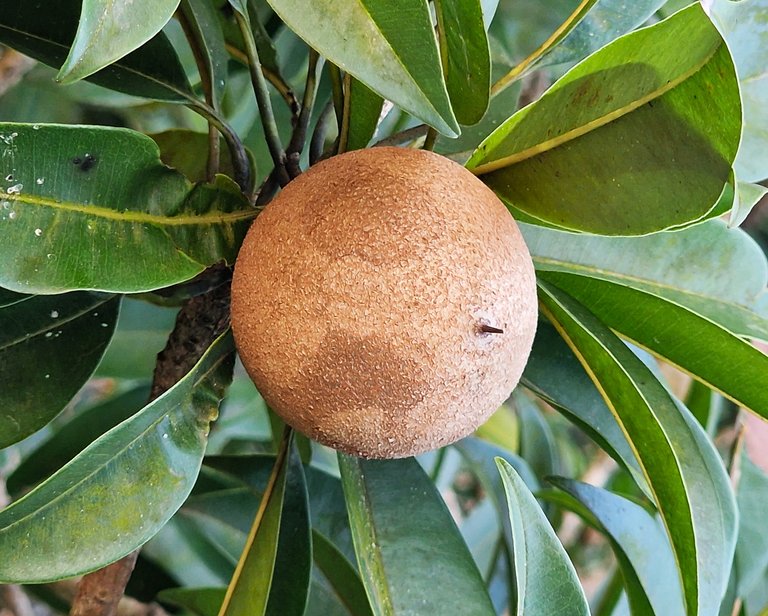 i wanted to end this post on a more positive note. here an almost ripe sapodilla or chickoo as they are fondly called here. this one is from a healthy tree. soon we will be enjoying our first chickoo shake of the season.
i wanted to end this post on a more positive note. here an almost ripe sapodilla or chickoo as they are fondly called here. this one is from a healthy tree. soon we will be enjoying our first chickoo shake of the season.
there's plenty more going on in our garden so i will continue in a new post very soon. i took all these photos with my S22 phone except the one of me on the ladder that was taken by my dear wife @hindavi
Photography of many beautiful flowers, the first is medicinal and poisonous flowers. Animals never eat it. I see it growing in the woods
!INDEED
the distinction between medicine and poison is often a matter of dosage. the sunbirds here go for the nectar but not even the termites will eat the plant
!BBH
@eolianpariah2 likes your content! so I just sent 1 BBH(4/5)@momins! to your account on behalf of @eolianpariah2.
(html comment removed: )
)
📸👌
#👍🌹
thanks
!LOLZ
lolztoken.com
He doesn’t want to be spotted.
Credit: reddit
$LOLZ on behalf of eolianpariah2
(1/6)
PLAY & EARN $DOOM
@mbracho, I sent you an🙏
A stunning shot😍
thanks a lot
!INDEED
Fabulous, dear, @eolianpariah2, your work is trasmitted througt agricultural culture.
thanks for your kind comment
!INDEED